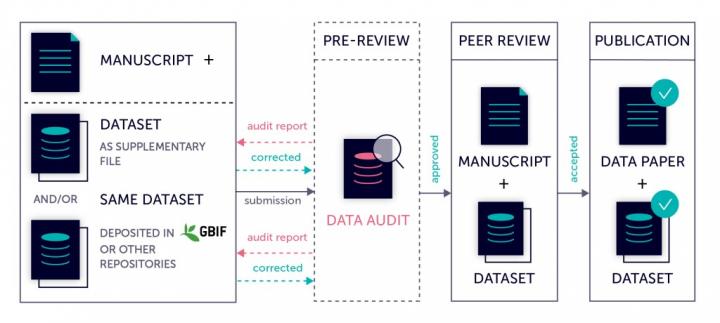
Australia’s unique and highly endemic flora and fauna are threatened by rapid losses in biodiversity and ecosystem health, caused by human influence and environmental challenges. To monitor and respond to these trends, scientists and policy-makers need reliable data.
Biodiversity researchers and managers often don’t have the necessary information, or access to it, to tackle some of the greatest environmental challenges facing society, such as biodiversity loss or climate change. Data can be a powerful tool for the development of science and decision-making, which is where the Atlas of Living Australia (ALA) comes in.
ALA – Australia’s national biodiversity database – uses cutting-edge digital tools which enable people to share, access and analyse data about local plants, animals and fungi. It brings together millions of sightings as well as environmental data like rainfall and temperature in one place to be searched and analysed. All data are made publicly available – ALA was established in line with open-access principles and uses an open-source code base.
The impressive set of databases on Australia’s biodiversity includes information on species occurrence, animal tracking, specimens, biodiversity projects, and Australia’s Natural History Collections. The ALA also manages a wide range of other data, including information on spatial layers, indigenous ecological knowledge, taxonomic profiles and biodiversity literature. Together with its partner tools, the ALA has radically enhanced ease of access to biodiversity data. A forum paper recently published with the open-access, peer-reviewed Biodiversity Data Journal details its history, current state and future directions.
Established in 2010 under the Australian Government’s National Collaborative Research Infrastructure Strategy (NCRIS) to support the research sector with trusted biodiversity data, it now delivers data and related services to more than 80,000 users every year, helping scientists, policy makers, environmental planners, industry, and the general public to work more efficiently. It also supports the international community as the Australian node of the Global Biodiversity Information Facility and the code base for the successful international Living Atlases community.
With thousands of records being added daily, the ALA currently contains nearly 95 million occurrence records of over 111,000 species, the earliest of them being from the late 1600s. Among them, 1.7 million are observation records harvested by computer algorithms, and the trend is that their share will keep growing.

Recognising the potential of citizen science for contributing valuable information to Australia’s biodiversity, the ALA became a member of the iNaturalist Network in 2019 and established an Australian iNaturalist node to encourage people to submit their species observations. Projects like DigiVol and BioCollect were also born from ALA’s interest in empowering citizen science.
The ALA BioCollect platform supports biodiversity-related projects by capturing both descriptive metadata and raw primary field data. BioCollect has a strong citizen science emphasis, with 524 citizen science projects that are open to involvement by anyone. The platform also provides information on projects related to ecoscience and natural resource management activities.
Hosted by the Australian Museum, DigiVol is a volunteer portal where over 6,000 public volunteers have transcribed over 800,000 specimen labels and 124,000 pages of field notes. Harnessing the power and passion of volunteers, the tool makes more information available to science by digitising specimens, images, field notes and archives from collections all over the world.
Built on a decade of partnerships with biodiversity data partners, government departments, community and citizen science organisations, the ALA provides a robust suite of services, including a range of data systems and software applications that support both the research sector and decision makers. Well regarded both domestically and internationally, it has built a national community that is working to improve the availability and accessibility of biodiversity data.
Original source:
Belbin L, Wallis E, Hobern D, Zerger A (2021) The Atlas of Living Australia: History, current state and future directions. Biodiversity Data Journal 9: e65023. https://doi.org/10.3897/BDJ.9.e65023




















